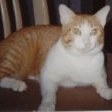Safe To Delete Multiple User Accounts?
-
Recently Browsing 0 members
- No registered users viewing this page.
-
Topics
-
-
Popular Contributors
-
-
Latest posts...
-
25
-
9
Broke Up With The Bubble Tea Girl… But How Bad Is This Move?
You mean like friends with benefits? -
3
THAILAND LIVE Thailand Live Tuesday 15 July 2025
Australian Teen’s Close Call in Phuket Highlights Drug Dangers for Tourists Picture courtesy of The Daily Mail An Australian teenager's harrowing experience in Phuket serves as a stark warning to young tourists tempted by nightlife in Thailand. Mia Pacor, 18, shared on TikTok how a night that began innocently almost ended in disaster. Full story: https://aseannow.com/topic/1366665-teen’s-close-call-in-phuket-highlights-drug-dangers-for-tourists/ -
3
THAILAND LIVE Thailand Live Tuesday 15 July 2025
Naked American Man in Drug-Fuelled Frenzy Found in Condo Drainage Tunnel, Bites Rescuers Pictures courtesy of Khaosod. In a bizarre and disturbing incident in Bangkok’s Chom Thong district, a naked and frenzied American man was found inside a storm drain behind a condominium complex on Kanlapaphruek Road. The man, later identified as 28-year-old Jack, refused assistance and bit a female rescue worker during efforts to extract him from the drainage system. Full story: https://aseannow.com/topic/1366650-naked-american-man-in-drug-fuelled-frenzy-found-in-condo-drainage-tunnel-bites-rescuers/ -
3
THAILAND LIVE Thailand Live Tuesday 15 July 2025
Wall Street to Sukhumvit: Expat’s Brutal Wake-Up Call for Dreamers in Thailand Author James David Spivey In a stark revelation, retired American expat James David Spivey, who traded the hustle of Wall Street for the charms of Sukhumvit, delivers a blunt warning to those dreaming of a Thai retirement. Full story: https://aseannow.com/topic/1366658-wall-street-to-sukhumvit-expat’s-brutal-wake-up-call-for-dreamers-in-thailand/ -
55
THAILAND LIVE Thailand Live Monday 14 July 2025
to continue: Thailand Live Tuesday 15 July 2025 https://aseannow.com/topic/1366659-thailand-live-tuesday-15-july-2025/
-
-
Popular in The Pub





.thumb.jpeg.d2d19a66404642fd9ff62d6262fd153e.jpeg)




Recommended Posts
Create an account or sign in to comment
You need to be a member in order to leave a comment
Create an account
Sign up for a new account in our community. It's easy!
Register a new accountSign in
Already have an account? Sign in here.
Sign In Now